


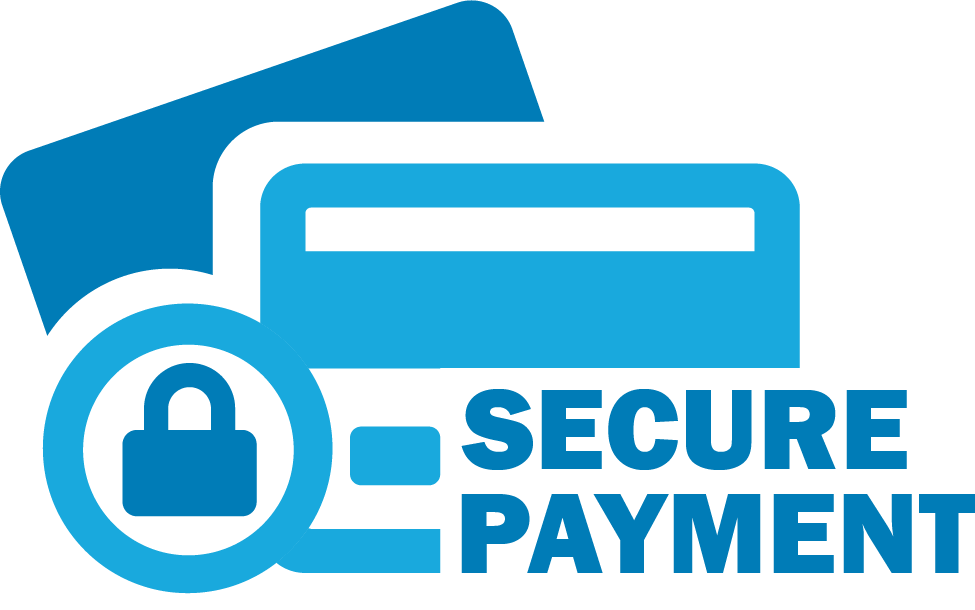

 trip overview
included
Trip Highlights
activities
accommodations
itinerary
faq
essential trip information
best season to travel
price & availability
Reserve Online
trip overview
included
Trip Highlights
activities
accommodations
itinerary
faq
essential trip information
best season to travel
price & availability
Reserve Online
 CREATING AUTHENTIC TOURS IN PERU
CREATING AUTHENTIC TOURS IN PERU

To the southeast of the city of Cusco, imposing Singrenacocha lake that changes its color three times a year between shades of turquoise, blue and light green, this beautiful lake is located 100 km from the city of Cusco with a height of 4450m; in the Vilcanota mountain range, very close to the Ausangate Mountain, between the districts of Ocongate and Marcapata, at a distance of 3 hours by bus from the imperial city of Cusco.
Singrenacocha Lake is one of the most beautiful lakes in the Cusco region, it is a source of life that houses in its surroundings some high Andean regions, as well as a rich variety of wildlife typical of this region of Peru, such as; llamas, alpacas, vicuñas, vizcachas, condors, eagle foxes among many others.The way to arrive is mainly through nice paved road, and the end is a dirt road with passing many local villages along the route.
The Singrenacocha lake, is surrounded by spectacular landscapes and mountains that are part of the Vilcanota mountain range, such as the Wallpayuq, Chumpe and Callangate mountains. This singrenacocha lake is little known and visits what makes it more special. Singrenacocha lake which in Quechua ‘Sigrina’ means Mermaid. From it it is possible to observe the snowy Ausangate.
Moreover, this Singrenacocha lake is more beautiful than Humantay lake, since the entire color is a real turqouise color, and also we see some snow-capped mountains.
Pickup for the Singrenacocha Lagoon tour is from your hotel in Cusco at 7:00 am. We then head by tourist transport to Ocongate. This trip lasts approximately 3 hours. You will cross the southern valley of Cusco, passing through picturesque communities where corn, quinoa, wheat, and vegetables are grown, as well as beautiful eucalyptus forests. After crossing the Vilcanota River at Urcos, we begin the zigzag ascent along the Interoceanic Highway, a wide road that leads through the mountains to the valleys of Ccatca, Ocongate, and Tinki. There, the landscape changes to that of a beautiful chain of snow-capped mountains where the snow-capped peak of Ausangate stands out imposingly. After crossing the bridge in the town of Pampacancha, we will arrive at the beautiful Singrenacocha Lagoon, which awaits us with its turquoise, blue and green waters, the contrasts of its waters are as mysterious as the snow-capped mountains that surround it, there you can enjoy a unique landscape, where local people graze their alpacas and llamas. Along with your guide, you can tour part of the Singrenacocha Lagoon, with whom you will learn about the stories and myths of the Quechua people. After taking the best photos, we return to Cusco. This trip will be 3 hours, arriving at your hotel at approximately 5:00 pm.
If you like the best trekking adventures and unique places, this site will fascinate you, for its beautiful landscapes of the Andes and the mountain range of the snowy Ausangate. Singrenacocha Lake offers you a day full of ecological and cultural tourism experiences. In this list of questions, our adventurers club answered the most frequently asked questions about this natural attraction of Cusco. If you have any other questions, please, you can do it through the online chat, or by mail.
The Sigrenacocha lake is located between the districts of Ocongate and Marcapata in the province of Quispicanchis, department of Cusco. It is at an altitude of 4,450 meters above sea level, 3.82 km long and 0.88 km at its widest point.
We will pick you up at your hotel in Cusco at the scheduled time for the start of our trip by car, approximately 120 km, a total average of 3 hours; en route we will pass through the towns of Andahuaylillas and Urcos enjoying the landscape of the area.
After passing the town of Urcos, we will take the detour to enter the South Interoceanic Highway, a fully paved road to the Community of Tinke, where we will make a brief stop; After about thirty more minutes in transport we will finally arrive at Yanacancha, a small community located near the lake, from this place we will prepare ourselves for the start of the walk towards the Singrenacocha lake that will be from 45 minutes to 1 hour until we reach the Mirador de the Turquoise Lake of Sigrenacocha where we will have a short rest and time to appreciate the landscape.
We continue the walk for an average of 30 more minutes (optional) until we reach the shores of the lagoon and be able to explore, walk around this beautiful lagoon and appreciate the wonderful landscape much more closely, after the visit and having enough time for the photographs and snack, we return by the same road to Yanacancha to take our transport that will take us to the community of Pampacancha where we will enjoy the thermal baths of the area and time for a lunch.
We will return by the same route to the city of Cusco, arriving at approximately 6:00 p.m.
In the Cusco region, which is located in the Andes mountain range of southern Peru. It has only two well-marked stations.
The dry season: This starts from the month of April to November; During these months are the best times of the year to carry out any hiking activity in Cusco, be it the tour to Ausangate, Lares, the Inca Trail to Machu Picchu, or the visit to Singrenacocha.
Why choose these months:
The rainy season: It includes between the months of December to March, it is when the great storms appear, accompanied by lightning, lightning and hail, in the tourist attractions that are in the Ausangate circuit, the Mountain of colors Vinicunca, Lares Trek, Salkantay, Inca Trail to Machu Picchu, it is not recommended to visit them, because it could generate various inconveniences, such as landslides, increased river flow levels, many hours of fog. Therefore, Andean Great Treks does not normally operate trekking circuits in places that exceed 3,000 meters. We are always concerned about your comprehensive security, rather than seeking only economic interest.
The walk to Lake Singrenacocha has a moderate difficulty and can be done by anyone who is in good physical condition. The minimum age to do this tour is from 12 years old. But if you have any illness related to heart disease or high blood pressure, it is not a good idea to attend this type of activity, since it would be exposing your health to a very dangerous level.
The answer is Yes, you must be adapted to the altitude, although the first day you arrive in Cusco from a city at a lower altitude, the minimum days to participate in these tours of more than 4000 meters, it is not a good idea to visit them only with one day of acclimatization. Because it could give you the famous altitude sickness Soroche.
To avoid this effect of altitude, you must participate in adaptation activities such as the tour to the sacred valley. Or also if your doctor prescribed some pills, you can take them.
It is also not suitable to drink alcoholic beverages, smoke, or party in the night bars in Cusco.
The most important thing is to be well hydrated, in all the hotels in Cusco there are always thermoses with hot water, and some Coca teas.
In any type of emergency that may arise during the tour to Lake Singrenacocha, our support staff, as well as the route guides, are prepared to evacuate you as soon as possible to the nearest village, either using a mule, or the support of local people. For this, our tours are always organized with the use of an oxygen tank, and the first aid kit.
Please, before starting the tour, if you feel bad, tell the guide, in order to avoid setbacks or contingencies once in the attraction, since many times these sites are more than 1 hour away from where you find an emergency transport. Likewise, it is not correct to lie about your health history, since this would be considered a serious error.
You can cancel your tour to Lake Singrenacocha, before 15 days of starting your tour, without any charge for cancellations. But if for any reason you decide to cancel less than 48 hours before starting, you will lose your reservation deposit.
We recommend purchasing travel insurance if you plan to trek in Peru. Most of the trekking spots in Peru are very remote so if something goes wrong you will likely need an emergency evacuation and that can be incredibly expensive.
When choosing travel insurance, be sure to purchase a plan that covers high-altitude treks and helicopter rescue, just in case.
Yes. This is very important!!! We recommend that you bring 200 Peruvian soles. It is possible that you may not need any of this money, but just in case of an emergency you should make sure to have plenty of cash. If you are struggling on the route, you can use the money to purchase alternative forms of transportation such as: car, horse.
The answer is that if, since having trekking poles on Singrenacocha is vital, this instrument will help you overcome very difficult barriers, and have it in good balance during well-sloped descents. The type of cane that is recommended is of free will for you, since these define according to the food you are going to provide, it can be aluminum, carbon fiber, or other material, but if it has a good resistance When hiking, another no less important detail is that you must have the metal protectors at their tips, usually you will be accommodated with rubber soles. Preferably those that can be easily packed and tied.
STEP 1
STEP 2
STEP 3
STEP 4
Unfortunately, the 5% charge is completely out of our hands. This fee does not go to us, but to PayPal and VISA. There is really no way around it.
Want an in-depth insight into this trip? Essential Trip Information provides everything you need to know about this adventure and more.
View Essential Trip InformationThe best time to visit Peru is during the dry season, between May and November, when the weather is dry and bright, with more frequent rainfall occurring between November and April.
 JANUARY
JANUARY
 FEBUARY
FEBUARY
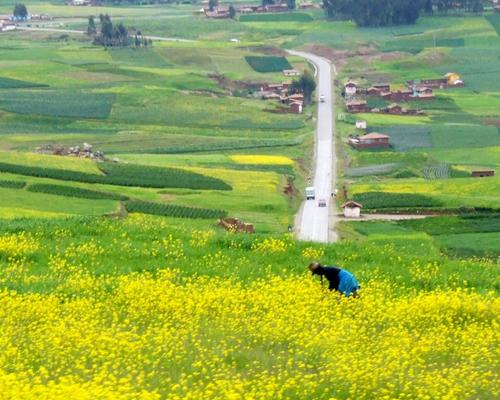 MARCH
MARCH
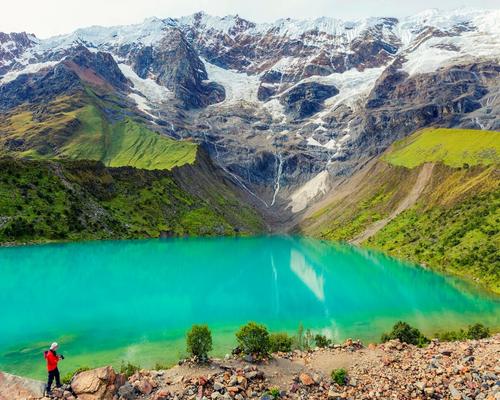 APRIL
APRIL
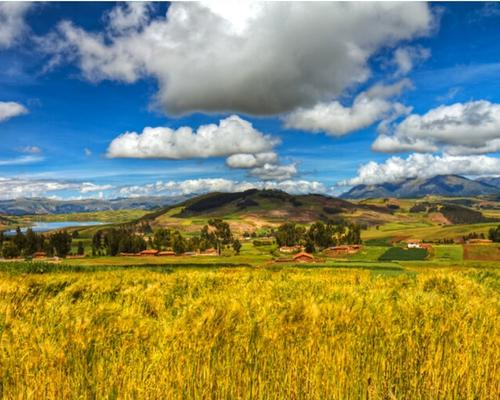 MAY
MAY
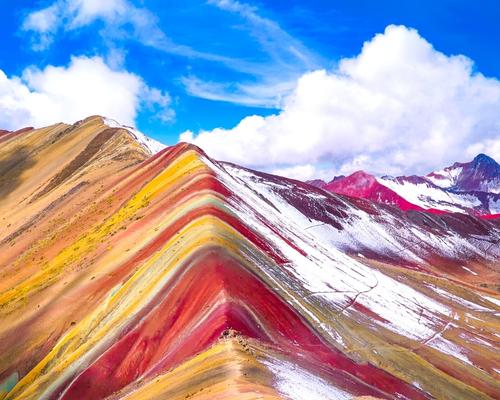 JUNE
JUNE
 JULY
JULY
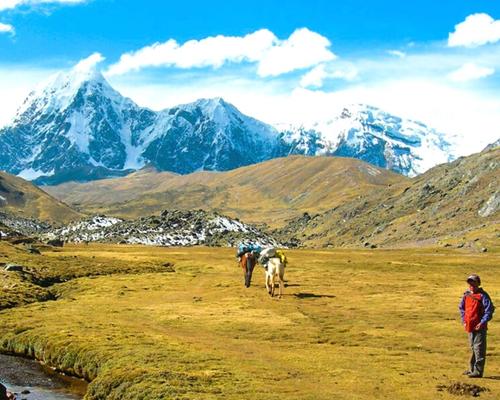 AUGUST
AUGUST
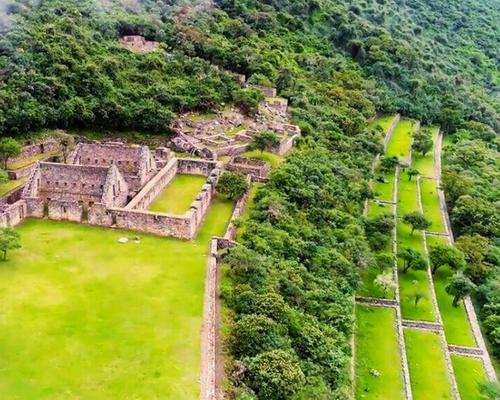 SEPTEMBER
SEPTEMBER
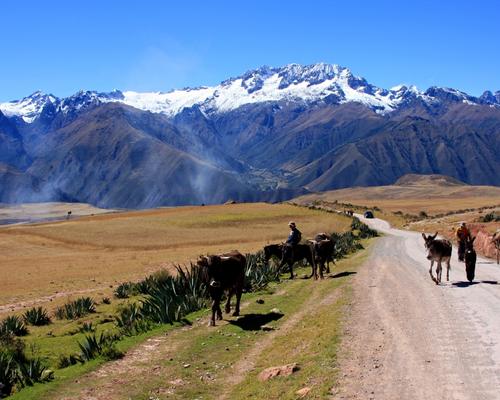 OCTOBER
OCTOBER
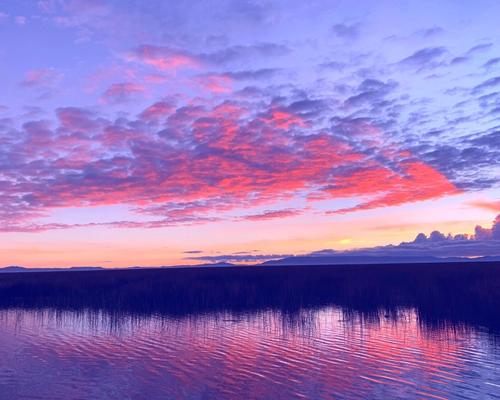 NOVEMBER
NOVEMBER
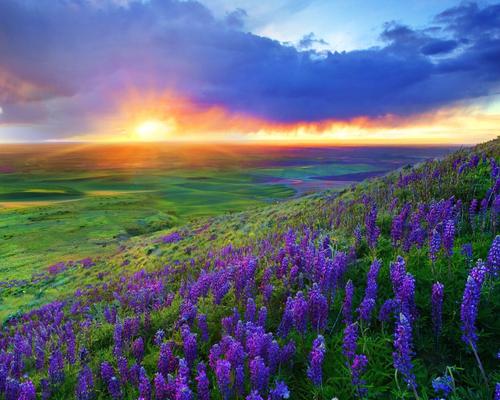 DECEMBER
DECEMBER
To book this tour, a minimum of $ 90 USD per person is required, the remaining balance will be paid upon arrival in Peru, at the Cusco office.
Any other additional information, please coordinate with your travel agent.

Nothing gets you closer to a country than walking through it, and we’ve got trips to suit walkers of all levels and interests.

All our Walking trips are graded from ‘Easy’ through to ‘Challenging to Tough’. On our online trip itineraries you’ll find a chart showing the daily walk distances, timings and information on the route including the terrain, altitude. Generally, no specific training is needed but you might feel more comfortable if you’ve got out walking a few times in the lead-up to your trip.
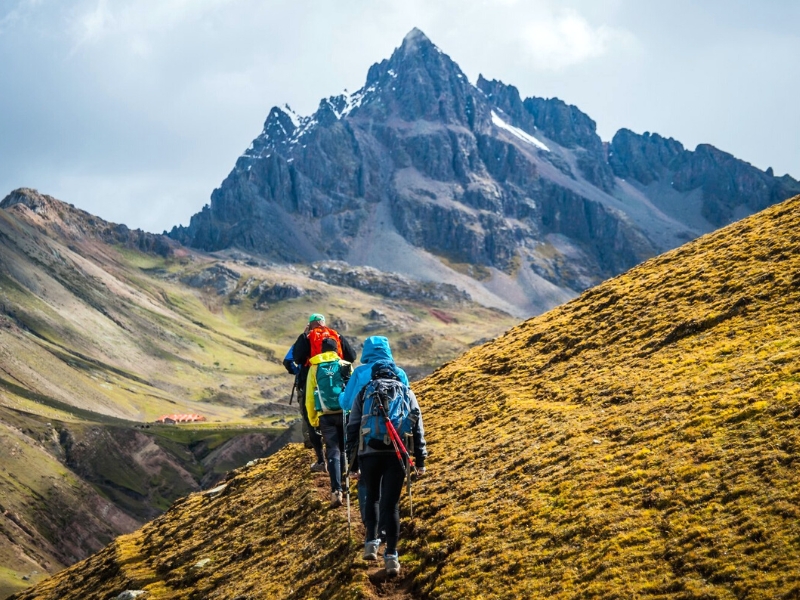
As with all our trips, every group is different but the ‘average’ group consists of roughly half couples and half solo travellers – all sharing a passion for exploring the world on foot. You’ll always have someone to keep you company along the route, but you don’t always have to walk together. Wherever possible your Andean Great Treks leader will allow everyone to walk at their own pace, regrouping regularly along the route.

Like many other countries in developing destinations, the region’s beauty and uniqueness are countered by inequality and lack of investment. This has led to crime rates (mainly theft and scams) not being uncommon in the larger cities. We know this doesn’t sound very attractive, but it’s important to mention it regardless. Most experienced and well-traveled visitors will understand this well and not be too concerned. However, having said this, it is our duty to take care of you during your visit. That’s why we present you here with a few recommendations to be extra safe. Avoid walking alone at night on empty streets. Don’t flaunt valuables! If going for a walk or going on public transport, be sensible and avoid showing off expensive items such as expensive watches and jewelry. Be careful of pickpockets! Don’t leave your bags anywhere that doesn’t look safe, and make sure to take them with you.
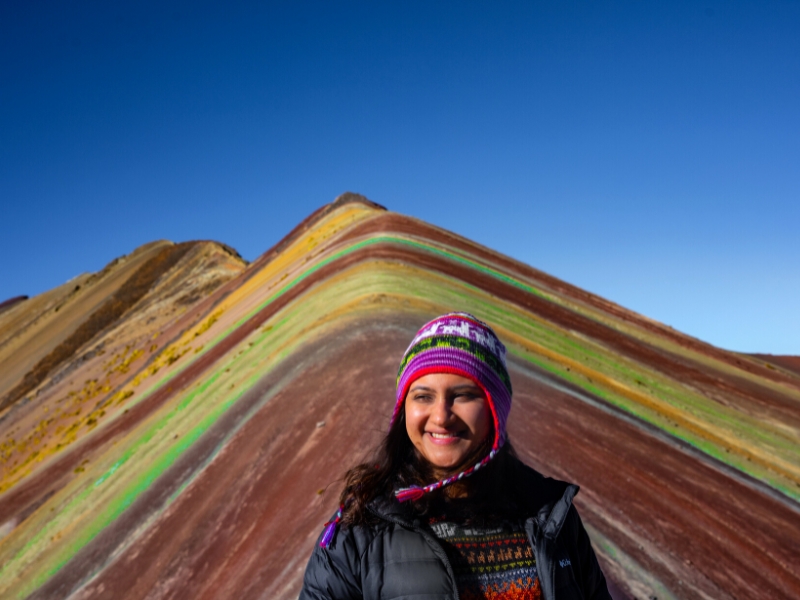
Soroche, or mountain sickness, is a reality for most people arriving in Cusco by plane from sea level and needs to be treated with respect. It’s vital to take it easy, not eating or drinking much on arrival, even sleeping a whole day just to assist acclimatization (coca tea is a good local remedy). After three days at this height most people have adjusted sufficiently to tackle moderate hikes at similar or lesser altitudes. Anyone considering hiking the major mountains around Cusco will need time to adjust again to their higher base camps.
If you do encounter altitude-related health problems, many hotels and restaurants have oxygen cylinders to help; alternatively, for serious cases, try call any of the clinics that are in Cusco, most of them have staff that speak English, for a greater facility in your attention it is recommended to have a travel insurance that covers medical expenses.
International flights to the capital city of Lima are plentiful but once there, you need to find a way to Cusco which is about 1100 km (684 miles) away. The quickest way to get to Cusco from Lima is to fly – it takes about 55 minutes. I don’t recommend traveling by bus because it takes about 24 hours – only do it if you intend to break the journey along the way, to visit other places.
Renting a car to travel from Lima to Cusco is not recommended. The roads are rough, and you could find yourself lost or face to face with one of the other dangers that come with traveling in unfamiliar territory.
The easiest way to explore the Sacred Valley from Cusco is on a guided full day tour that picks you up and drops you off from your hotel. The market in Pisac and Inca ruins in Ollantaytambo are the principal stops, though travelers with more time on their hands will find plenty more to see and do. It’s also possible to take a local bus or taxi into the Sacred Valley and do independent exploration.
Rainbow Mountain, or Vinicunca as it’s known by locals, has become a popular hike in the Cusco region. It’s possible to visit Rainbow Mountain in one (very long) day from Cusco or you can divide the trip into a two-day itinerary. While the hike isn’t very difficult and doesn’t have many steep inclines, Vinicunca is in a high elevation region (the highest part of the trail is 17,060 ft or 5,200 m) and you should spend time acclimating before starting the hike.
We are not afraid to say that Cusco is a place where every traveler ends up at least once during the trip around Peru, and it is hard to tell what is the right length of stay.
If your primary reason why to visit Cusco is to get to Machu Picchu, you still should spend here at least two days to acclimatize (despite the fact Machu Picchu is at a lower elevation than Cusco, some people still suffer from altitude sickness), and during this time you can explore the city and Sacred Valley.
From our personal experience, we think that the longer you can stay in Cusco it is better. Some travelers with limited time even revolve their entire itinerary around Cusco – this only proves how rich the city is in terms of sightseeing, architecture, and activities.
Cusco has so many things to see and do, not only within the city limits but mostly outside, that it is not a problem to spend here weeks. If you are flexible, sit down, and write down all one-day and multi-day treks you would like to do from Cusco, and you should get the optimal number of days for you.
There are so many things to see and do in Cusco and its surroundings that the city certainly deserves more than one day of your time.
To enjoy your days in Cusco the most, it is essential to choose the right accommodation. The good news is that Cusco has a great network of hotels for every type of traveler, from cheap hostels to luxurious mansions. That’s why your only job is to find a hotel in a location that suits you the best.
We recommend staying close to Centro Historico unless you want to stay away from crowds. We’ve selected the three best hotels in Cusco, so feel free to get inspired.
In recent years, Peruvian cuisine has gained popularity in the world’s culinary landscape, but for the freshest (and most authentic) specialty dishes, Cusco will not disappoint. Most Peruvian dishes carry big flavor not seen in other Latin and South American fare. You may have already tried popular dishes like ceviche (a cold dish of fresh raw fish with spicy citrus flavors) or lomo saltado (stir fried beef with fries). If you’re feeling a bit more adventurous, try Cuy (roasted guinea pig – yes, the American household pet) or charbroiled alpaca (also known as llama). Other delicious traditional dishes include adobo (a pork stew with corn beer), tamales, choclo con queso (boiled corn with local cheese) and the vegetarian stew capchi de setas. As far as vegetables go, Peru produces more than 4,000 varieties of potato, so you’ll find many dishes centered on them like papas a la huancaina (boiled potatoes with a spicy cheese sauce) and causa (a potato casserole with a variety of meat). Other staple veggies include corn and avocados. If your mouth isn’t watering yet, check your pulse.
For a taste of traditional dishes, head to PACHAPAPA or the award-winning CHICHA (visitors and locals recommend getting reservations well in advance). Peruvian cuisine often mingles with Asian influences, inspired by the culture brought by indentured servants and immigrants who came to Peru dating back to the original Spanish rule in the country. For a sampling of the Asian/Peruvian fusion cuisine, visit LIMO. If you’re really looking to splurge on a fine dining experience, try MAP Cafe. Located in the courtyard of the Pre-Columbian Art Museum in a glass shipping container, the fare is more contemporary Peruvian cuisine. You can also kick-start your day with coffee and breakfast at Jack’s Cafe, which serves breakfast all day. Many of the most popular restaurants are centrally located near Plaza de Armas.
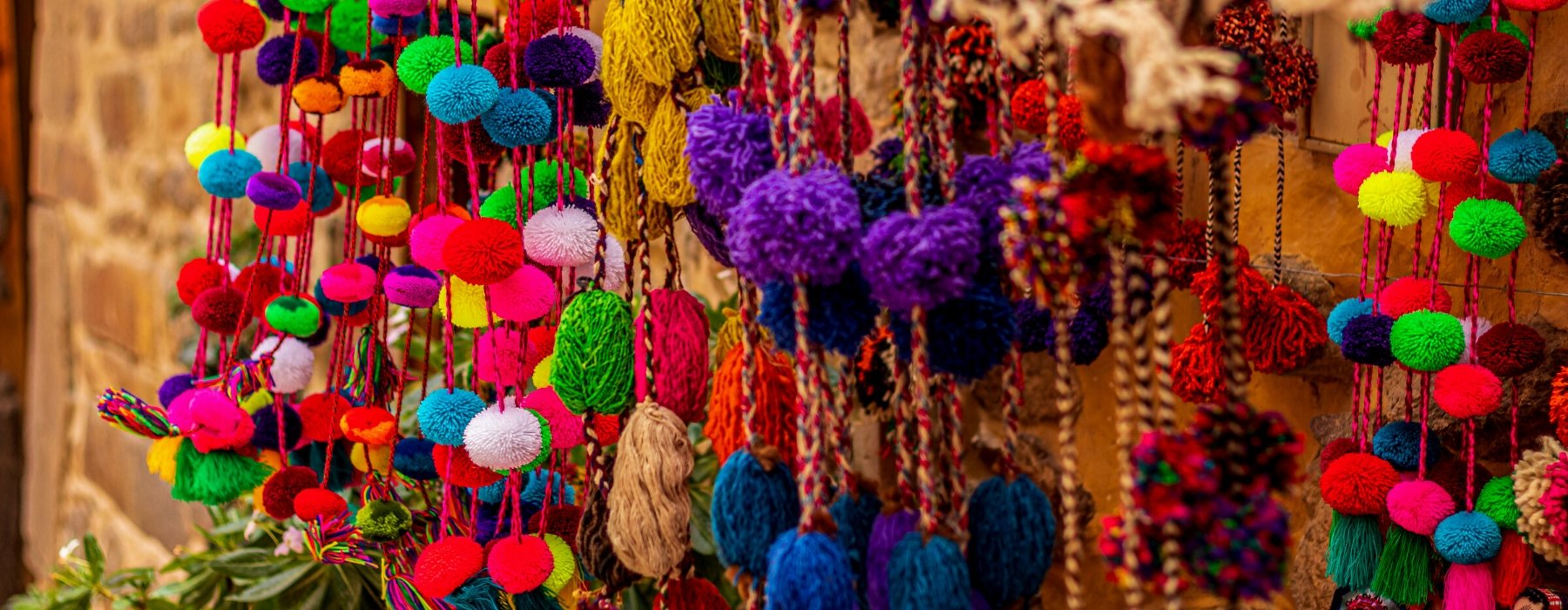
Every Andean Great Treks holiday has been thoughtfully planned and crafted by our specialists. They draw on their own extensive travel experience and the guidance and expertise of our local partners to create superb holidays. Our specialists are committed to making every aspect smooth and enjoyable; they genuinely want to ensure that the holidays they create leave you with wonderful lasting memories.
Every Andean Great Treks traveller is accompanied by an experienced tour guide, you will be immersed in Historic cities, ancient ruins and unfamiliar landscapes are all brought to life by our carefully selected local guides. They want to share their expertise and help you make your own discoveries too; their sole mission is to ensure you enjoy every moment.
Giving you the freedom to make your holiday even more memorable. We know how much our customers look forward to their holiday and we pride ourselves on the choice and flexibility that we offer to enhance every aspect of your experience. Whether it’s getting to the airport, upgrading your room or booking an additional excursion, we can help.

Our guides are the stars of the show; it is their unrivalled knowledge, passion and expertise that will transform your tour experience from good to truly extraordinary!
Because the have grown up in the area and know it like the back of their hand, so they can help you experience whichever aspects most interest you. They’re passionate about sharing their corner of the world with you, and as you explore together, they’ll open your eyes to the intricate details, provide background to enhance your understanding of what you’re seeing, and share stories that will bring everything to life.

“Your inspiration for a trip can be a single word or a highly evolved outline, but it’s the conversations we have that help us understand the experience you’re looking for. Meanwhile, I’m looking back on the time I spent at the destination.
‘The great thing about working with a specialist at Andean Great Treks is how they take your complete jumble of ideas and turn them into something absolutely spectacular.’
As you begin to share your ideas with your specialist, it will connect them immediately back to a time in their own travels. Conjuring a picture of the rest time they made that same discovery, reminding them how it felt.
Your specialist understands that, when the journey is right, it has the power to excite your emotions in the most profound ways after all, that was the effect on them.
They carry a treasure box of moments, captured over many journeys, into every suggestion they’ll share with you, as they ask you how you want to feel on your trip.

EXPERIENCES THAT CALL TO YOU
It’s what you do in a destination that helps bring it to life. It’s why we strive to choose experiences that help you connect to a place, absorbing a little of its complex character. Wherever your passions lie, we’ll recommend experiences that speak to you, and we’ll recommend the guide or local expert who’s most qualified to help you explore. Packing your holiday full of special experiences means some early starts and long days, but you can be sure that you’ll return home with many incredible memories! Read our Tours and check the Physical Ratings to see if the pace and activity levels are right for you.
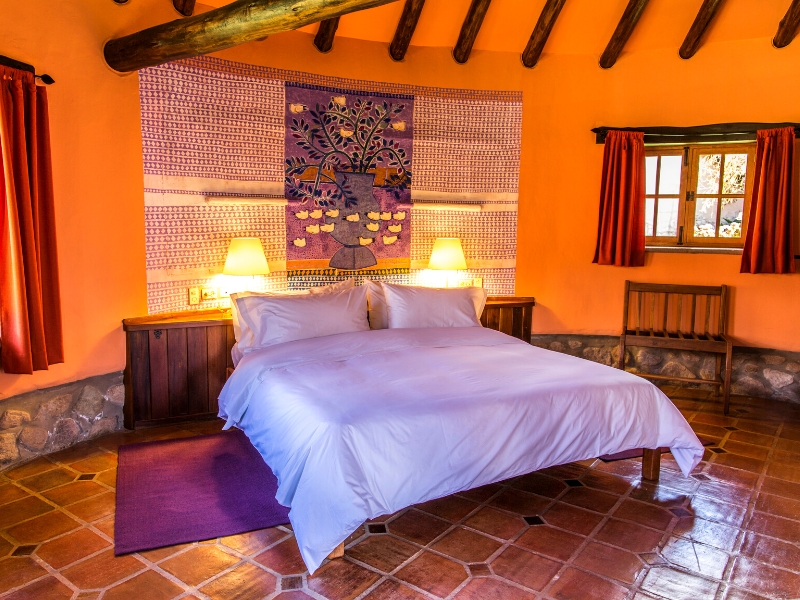
STAYS WITH DIFFERENCE
We know that where you stay is a cherished part of your travels. So, we go to great lengths to find places to stay that exceed expectations, or go above and beyond the ordinary, whether in their character, hospitality, or location. Over the years, we’ve discovered the very best properties, trying and testing them, so we can choose the right one for you. We’ve nourished long-standing relationships with these establishments and the people who founded them, and we’ve stayed there many times often, we’ll even know which rooms have the best views (and reserve them for you).
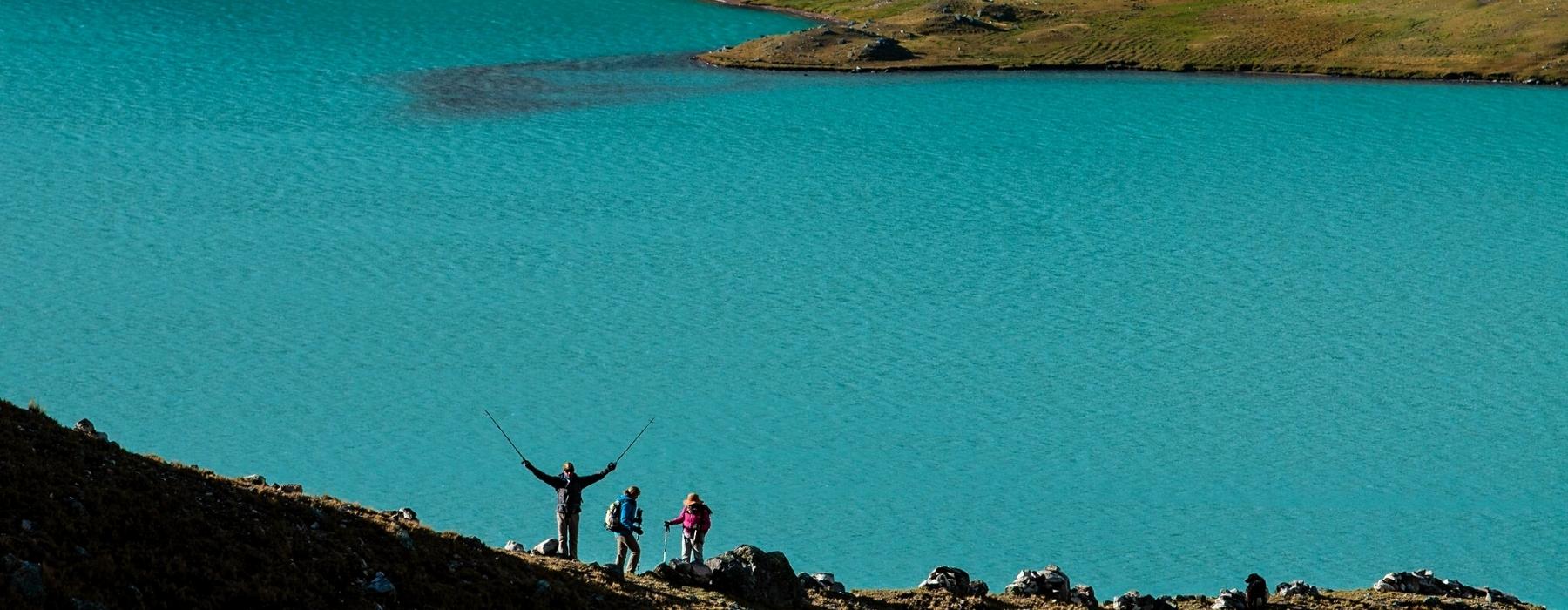
Our style of travel — authentic, thoughtful, and focused on building meaningful connections to the people and places you visit — is inherently respectful and considerate of the destinations we love. We design each aspect of your trip exactly as you want it, which includes its sustainability. That might mean choosing a train journey instead of a flight, staying at eco-friendly wildlife lodges, or opting for experiences that give back to the communities you’re visiting. The choice is yours.
Responsible travel has always been at the heart of what we do. First and foremost, because it gives you the best experience, but, also because it helps to preserve the communities and landscapes you visit. This isn’t new for us we collaborated with local communities and outside experts so we can grow to be better ambassadors.
The most authentic and interesting experiences often directly benefit the local people. We prefer to buy local products that are produced in the organic farms of the Sacred Valley, we also have alliances with local artisan organizations who provide us with souvenir items for our clients, your money directly benefits the local economy.
Our style of travel — authentic, thoughtful, and focused on building meaningful connections to the people and places you visit — is inherently respectful and considerate of the destinations we love. We design each aspect of your trip exactly as you want it, which includes its sustainability. That might mean choosing a train journey instead of a flight, staying at eco-friendly wildlife lodges, or opting for experiences that give back to the communities you’re visiting. The choice is yours.
Responsible travel has always been at the heart of what we do. First and foremost, because it gives you the best experience, but, also because it helps to preserve the communities and landscapes you visit. This isn’t new for us we collaborated with local communities and outside experts so we can grow to be better ambassadors.
The most authentic and interesting experiences often directly benefit the local people. We prefer to buy local products that are produced in the organic farms of the Sacred Valley, we also have alliances with local artisan organizations who provide us with souvenir items for our clients, your money directly benefits the local economy.
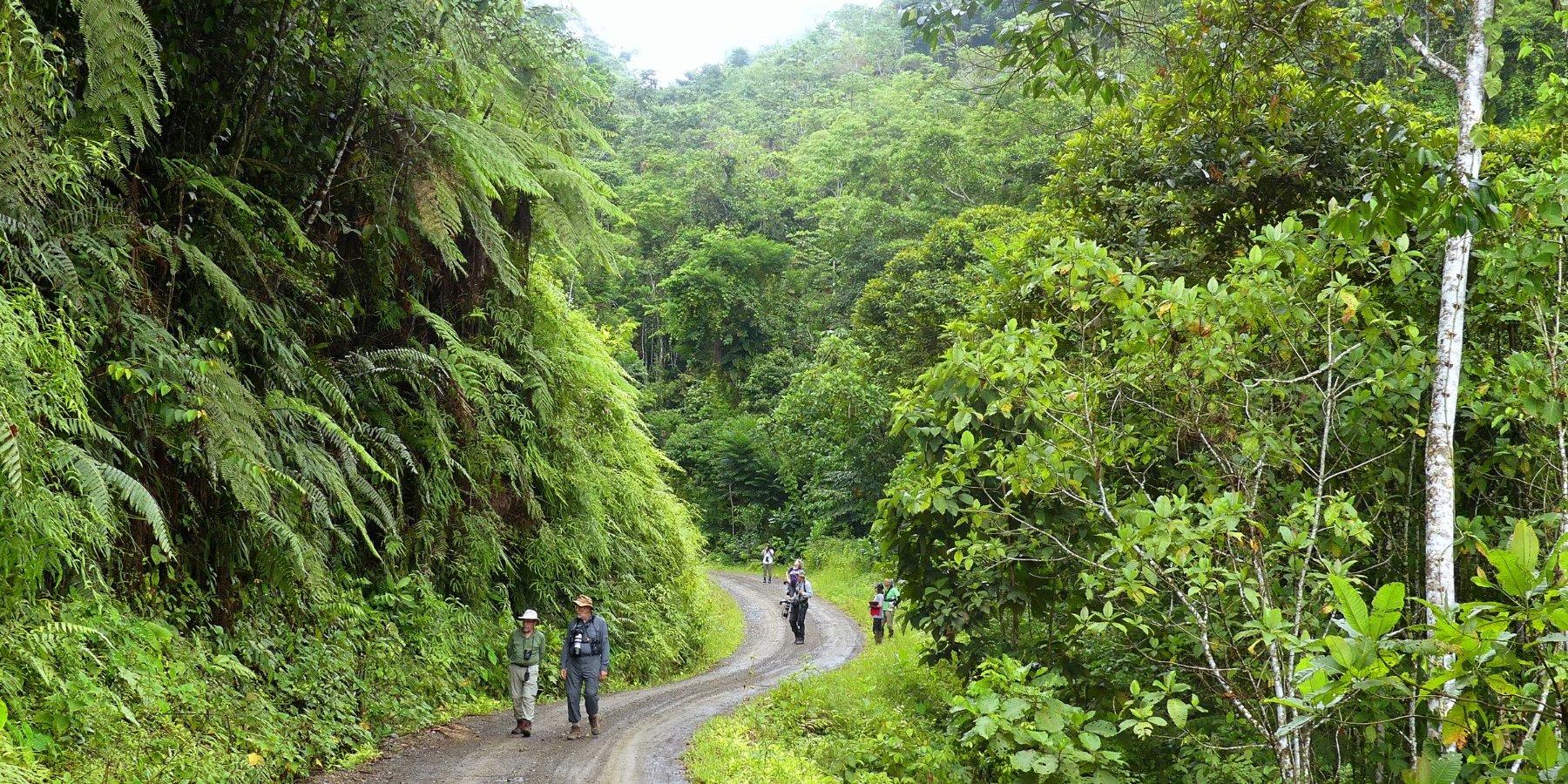
‘There’s a saying: we don’t inherit the Earth from our ancestors, we borrow it from our children. When we show you our country, this philosophy guides everything we do. It’s our responsibility to preserve the environment and wildlife, and support communities. That means using slower modes of transport, like cycling, employing local people, and working with communities who’ll benefit directly from your visit. This also gives you the best, most authentic impression of the places we want to share with you.
We prefer to buy local products in ecological bags, to avoid the use of plastic bags, likewise we teach the use of soaps and ecological products in each tour that we organize. We also work on reforestation projects with local communities who take care of landscape resources such as communal reserves, national parks.
‘There’s a saying: we don’t inherit the Earth from our ancestors, we borrow it from our children. When we show you our country, this philosophy guides everything we do. It’s our responsibility to preserve the environment and wildlife, and support communities. That means using slower modes of transport, like cycling, employing local people, and working with communities who’ll benefit directly from your visit. This also gives you the best, most authentic impression of the places we want to share with you.
We prefer to buy local products in ecological bags, to avoid the use of plastic bags, likewise we teach the use of soaps and ecological products in each tour that we organize. We also work on reforestation projects with local communities who take care of landscape resources such as communal reserves, national parks.
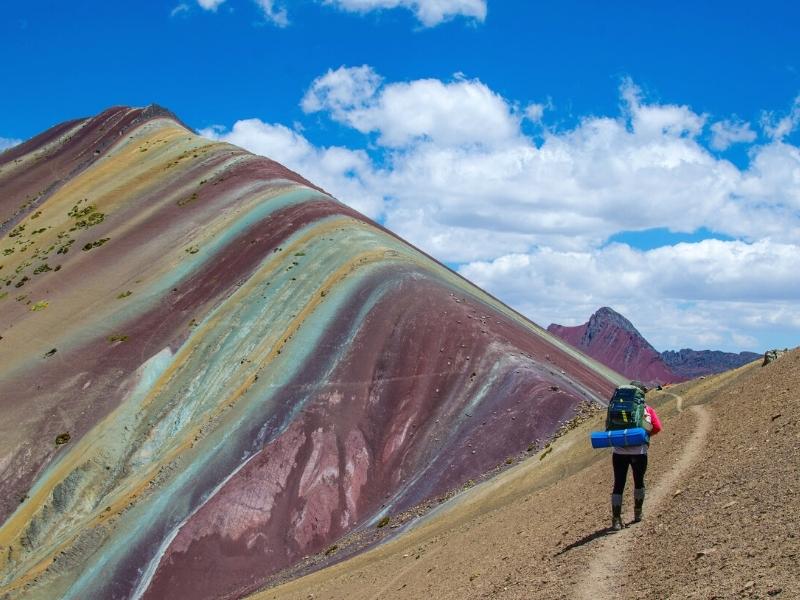
Explore the Vinicunca rainbow mountain tour, walk through the most beautiful mountains in Peru, surrounded by large snow-capped mountains, and herds of alpacas. Enjoy great views of the Red Valley, which will give you a feeling of being on the planet Mars.
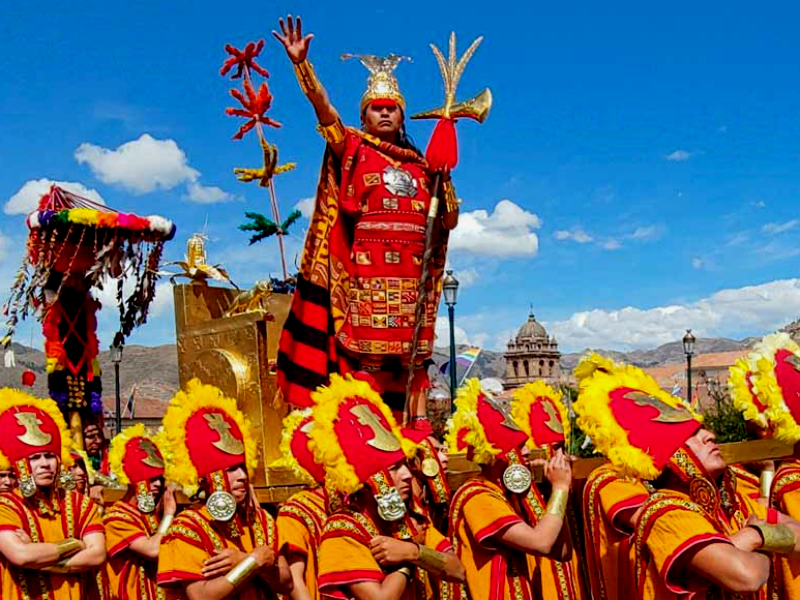
The Inti Raymi in Peru is a traditional religious festival of the most powerful god of the Inca civilization "Inti" (Sun). Each year on June 24th, The Inti Raymi festival is celebrated during the winter solstice. The festival is the most luxurious, large and colourful celebration performed in Cusco, like it was carried out on incas time.

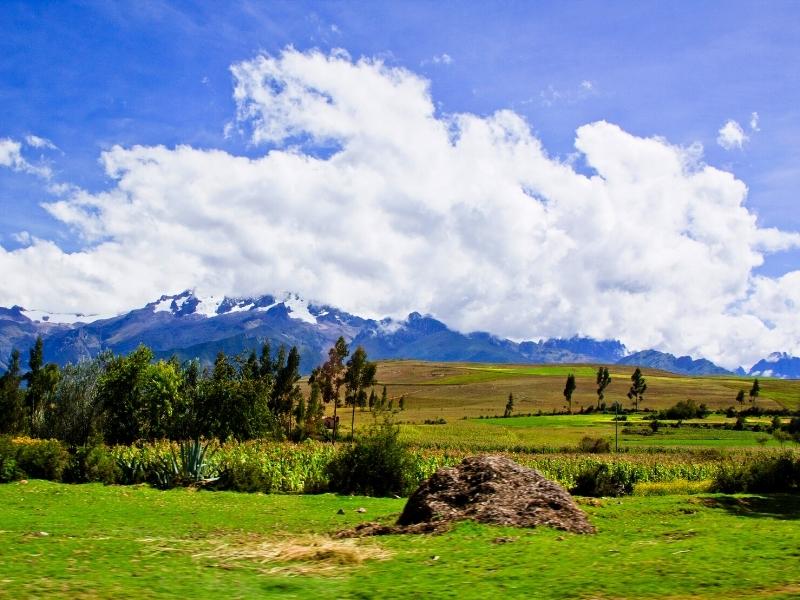
Explore the Sacred valley of the Incas, Visit the best archaeological remains of the Incas in Chinchero, Moray, Ollantaytambo and Pisac. Beautiful landscapes surrounded by snowy peaks and corn fields.
